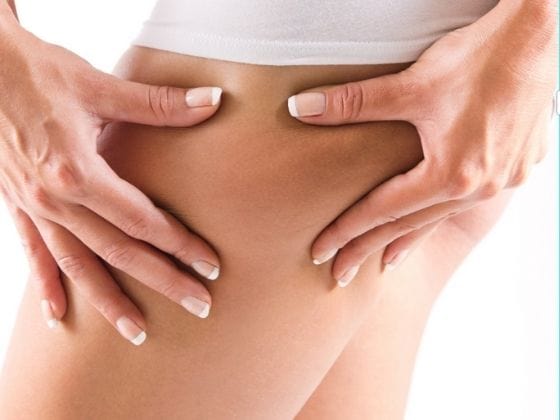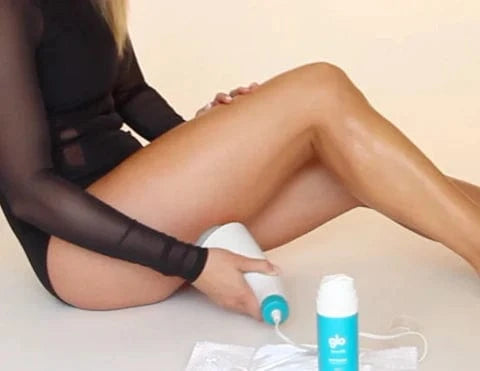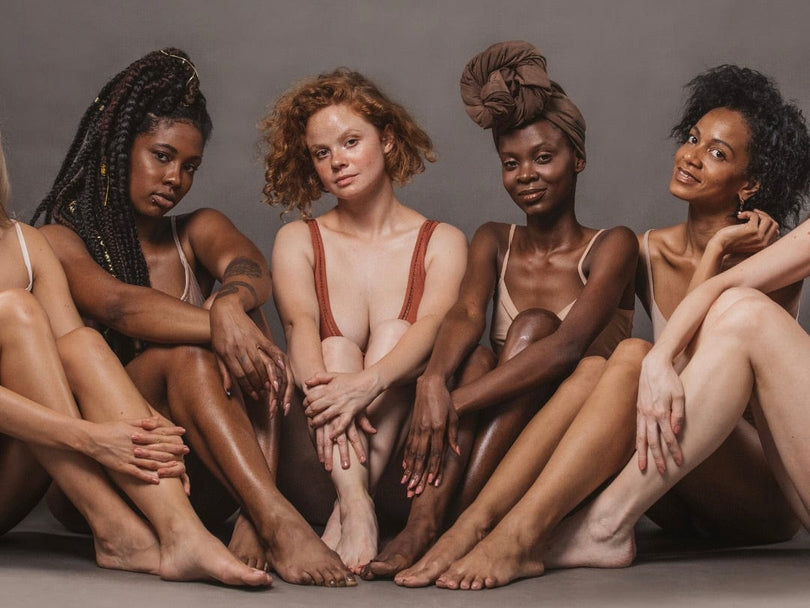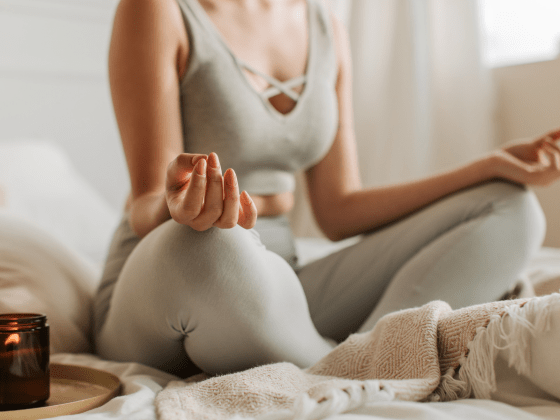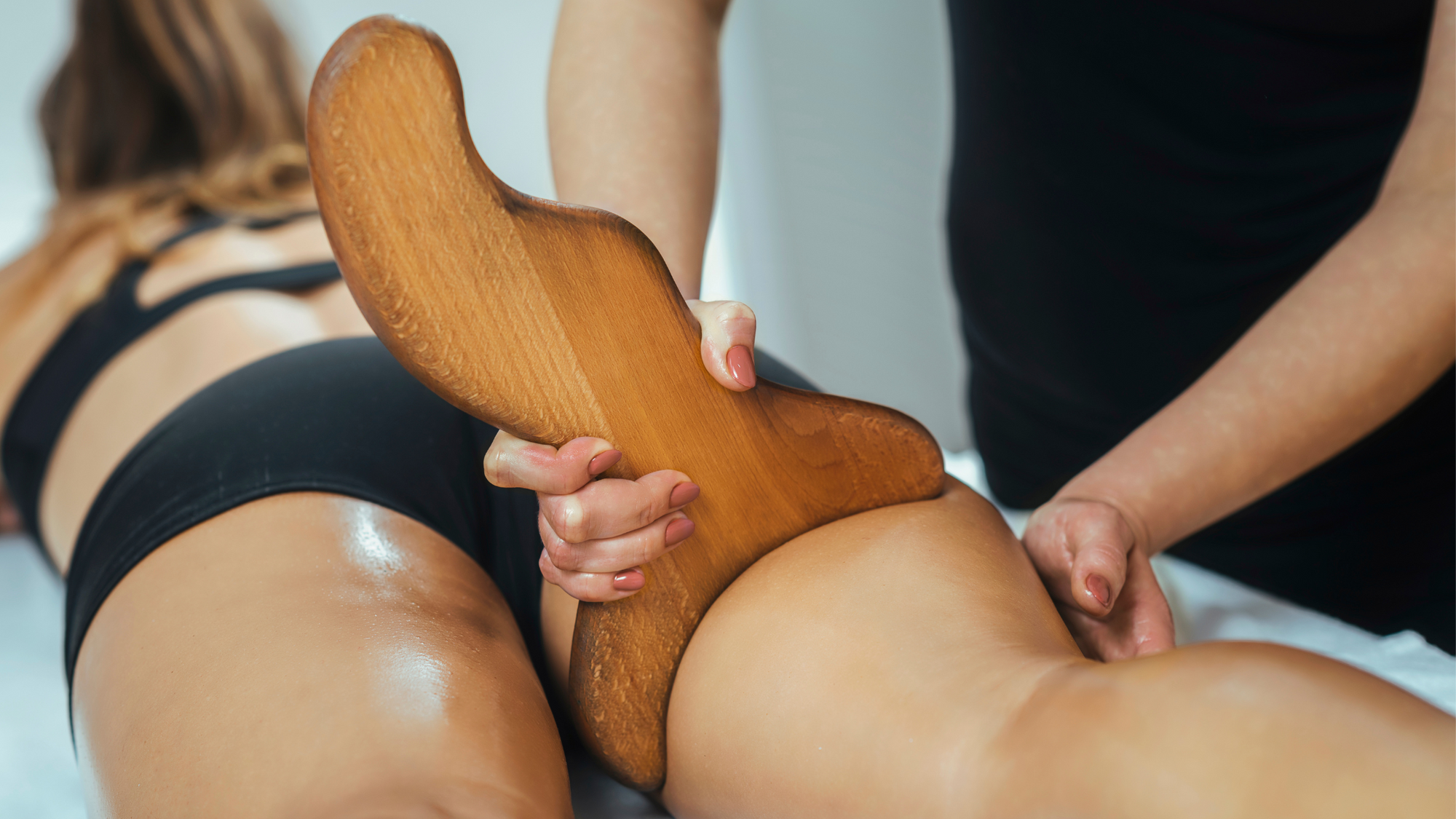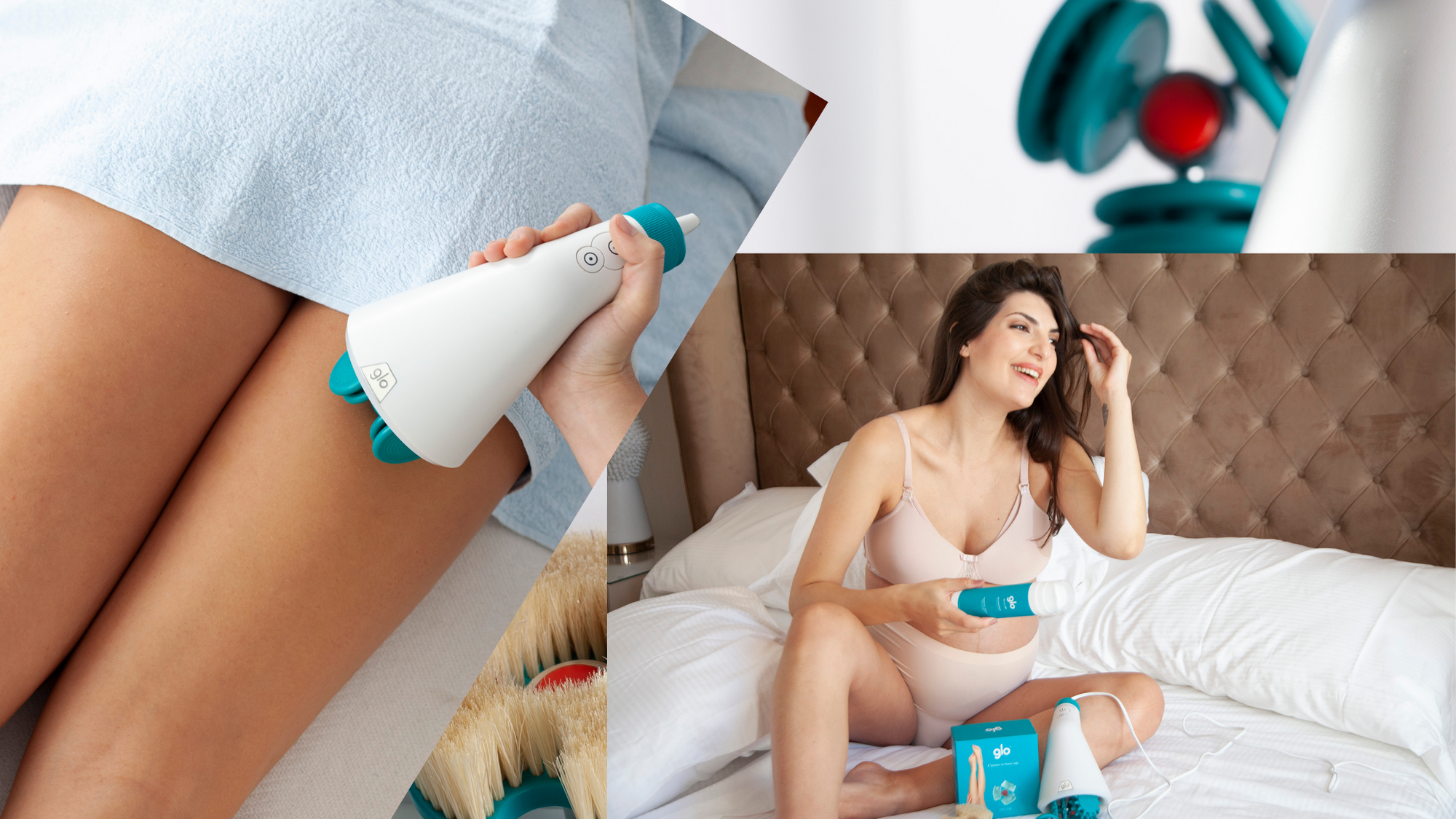If you are struggling with stubborn cellulite, we are here to help you better understand the reasons and how to combat it more efficiently.
To begin with, it is important to understand what cellulite is, why it appears, its causes... Also, depending on different stages (from stage I to stage IV) and types (soft, hard, edematous, mixed...) of the cellulite, and whether it’s localized or more extensive, it might be easier or more difficult to get rid of it.
First of all, we know that 9 out of 10 women have cellulite at some point in their lives. It is something common and has much to do with hormones and female genetics. Nevertheless, other controllable factors, such as diet and lifestyle, also contribute to its development.
The more I exercise, the more cellulite I have. Why?
Exercise is always a positive and healthy thing. When exercising, blood circulation improves and the capillaries in the areas that are prone to have cellulite grow.
and by exercising the blood circulation is reactivated and the capillaries in the areas prone to cellulite grow, allowing the blood to reach all the cells better. By oxygenating the tissue affected by cellulite, we will always achieve an improvement.
The images below will help us understand why it is difficult to eliminate cellulite even with diet and exercise, and why one can be physically slim but still have very visible cellulite.
 This image depicts the skin without cellulite, where one can see the different layers of the skin until down to the muscle. When the connective tissue is healthy and elastic (it is practically collagen fiber), the adipocytes are held in a space free of fluid retention and waste, making the skin look smooth and even.
This image depicts the skin without cellulite, where one can see the different layers of the skin until down to the muscle. When the connective tissue is healthy and elastic (it is practically collagen fiber), the adipocytes are held in a space free of fluid retention and waste, making the skin look smooth and even.
Underneath, there is a layer of fat over the muscle, which grows when our calorie intake is higher than its consumption, and vice versa. This graphic illustrates the skin with cellulite--the typical "orange peel" appearance. One can see how the extracellular tissue around the adipocytes has become saturated, causing them to increase in size and quantity, congesting the tissue. The connective tissue loses elasticity and hardens, and fibrosis occurs, encapsulating the nodules.
This graphic illustrates the skin with cellulite--the typical "orange peel" appearance. One can see how the extracellular tissue around the adipocytes has become saturated, causing them to increase in size and quantity, congesting the tissue. The connective tissue loses elasticity and hardens, and fibrosis occurs, encapsulating the nodules.
This process begins with fluid retention, which can be caused by hormonal changes or genetics. In other words, the cause of cellulite is not always related to weight or lifestyle. That is why it is not uncommon to see young women and athletes with cellulite--usually hard and very localized.
Once cellulite is developed, even if we start exercising and adopting a healthy diet, it will only impact on the fat and muscle layers underneath, while the cellulite stays the same.
Depending on grade, certain types of cellulites (for example, in grade I-II-III) can be improved with proper exercise, as it helps to reduce water retention and improve circulation and soften and release the fat nodules from being encapsulated.
What exercise can you do to help reduce cellulite?
To reduce cellulite, which usually accumulates in the buttocks, thighs and hips, the best exercises are those focused on strengthening and toning the legs. They should be exercises focused on losing fat and gaining muscle. So ideally, one should combine cardio and strength training.
Here’s a possible routine:
- Start with 10 to 15 minutes on a treadmill, elliptical machine or stationary bike to burn calories and get your body toned.
- Squats are the best exercise for lower body Start with some squats without weight with repetitions in sets of 3, each with 15 repetitions.
- You can accompany this exercise with bounce squat.
- TIPS: engage your core and keep your back straight while doing this exercise.
If you notice cellulite on your arms, push-ups or biceps push-up with weights will help tone them.
What is cellulite?
As we have seen in the previous graphics, cellulite is the result of a process that occurs under the epidermis and usually manifests itself in the form of "orange peel skin" on the surface.
We shouldn’t confuse cellulitis, which is a bacterial skin infection, with cellulite, which remains at large an aesthetic concern. We can loosely divide cellulite into the following four groups:
- Hard cellulite: common in young women and athletic women. It is typically located on the knees and buttocks and oftentimes Where it’s at, the skin is tight and coarse and gives the impression of being well adhered to the muscle. It is very firm and its treatment is complicated.
- Soft cellulite: where it’s at, the skin is soft and has a more flaccid appearance. Soft cellulite develops usually due to lack of exercise, sudden weight gain or weight loss.
- Edematous cellulite: the least frequent and the most complicated to treat. It occurs where there is significant fluid retention and poor circulation. It is located mainly on the legs and buttocks. It may or may not be painful.
- Mixed cellulite: the most common type, characterized by the presence of several types of cellulite in different body.
Why does cellulite appear?
Many causes can contribute to its appearance: genetics, hormons (puberty, pregnancy, menopause ...), sedentary lifestyle, poor diet, smoking, alcohol, refined sugary, dehydration… Because of this, it’s important to maintain a healthy lifestyle, not just for the sake of reducing cellulite, but to improve our overall quality of life as well.
What happens in the subcutaneous tissue where cellulite forms?
The development of cellulite usually begins with the accumulation of fluids that our lymphatic system has not eliminated naturally. This fluid retention does not always mean that our legs would noticeably get swollen, but that there is fluid accumulated in the cellular tissue.
When this happens on a regular basis, the sugar polymers in the veins go out into the extracellular space and cause the adipocytes (fat cells) to undergo hypertrophy (increase in size).
Gradually, the fat cells continue to grow in number and size. This in turn causes congestion of the affected tissue, and a worsening of the micro-circulation, resulting in a loss of elasticity of the fibrous septa or connective tissue. As this happens, the connective tissue tightens and pulls the skin inward, therefore creating the dimpling effect on skin surface.
Once cellulite has appeared, our skin appears to be what is commonly referred to as the "orange peel skin" because of its characteristic dimples and bulging areas.
- The dimples are formed because the naturally elastic connective tissue stiffens and contracts, pulling the skin inwards.
- The bulging areas appear because the fat cells thicken and grow in number, pushing the top skin layer outwards.
Are there different degrees of cellulite?
Indeed, there are different degrees of cellulite depending on the hardness of the adipocytes or fat cells. In grade I, we would be talking about incipient cellulite, which can be observed when pinching the skin and is very easy to treat and control.
In Grade II, the cellulite becomes more visible and can be observed when standing, sitting, or crossing the legs, and less visible when we are lying down.
In grade III, the cellulite is fully visible to the naked eye.
Up to this stage, if the right tools are used and the treatment is consistent, very good results can be achieved.
In stage IV, the adipocytes are usually very hard (like balls) with a lot of fibrosis. In this stage, to improve it we must resort to more invasive methods.
Why won't my cellulite go away?
Most likely, you are probably using a method that is not right for you. Or you are doing the right things, but not consistent enough.
As we have explained, the development of cellulite is a very complex process, which, when not intervened soon enough, falls quickly into a vicious circle. So, the key to reducing cellulite is starting consistent treatment early in the process.
You can spend a lot of money on creams, but using only a topical product is not enough. Because without a good massage, the ingredients stay only on the skin surface—far away from where cellulite start forming. The skin might look temporarily smoother due to the hydrating effect of the cream, but the real underlying problem has not been improved.
If you have habits of eating fast food, not drinking enough water, and has a sedentary lifestyle, here is where you should start. Because no matter which degree of cellulite you have, eating more healthily and moving more will always help.
If you go to specialty SPA for cellulite treatments and have seen some improvement, it is important to keep on doing massages at home so that you can maintain the result.
Different treatments for cellulite
The treatment uses a subdermal technique, working on the deeper skin layers, where cellulite forms.
Cosmetic or skincare products alone do not work because the results are superficial.
The methods that are truly effect and induce texture changes are, for example, lymphatic drainage, mesotherapy, ozone therapy, radiofrequency therapy, etc.
It is very important to treat edema (fluid retention), improve micro-circulation, as well as reduce fat nodules.
Anti-cellulite massage is an effective method to treat cellulite in the first three degrees. They are also a great ally to combine with other professional treatments such as liposuction, radiofrequency, cavitation etc. to help maintain and improve their results.
Add the award-wining and clinically tested Glo910 anticellulite massager to your cart

An oil is usually used for the massage, ideally with essential oils that help to soften the cellulite.
In the first phase of the massage, we will try to heat and soften the fat; in the second phase, we will focus on drainage, to help eliminate retention and promote the expulsion of fat, as well as activate circulation.
Add the award-wining 100% natural and proven Oil910 to your cart
Due to the great difficulty to perform a good manual anti-cellulite massage by oneself, especially if you are not an expert, there are manual and electric anti-cellulite massage devices on the market to help you.
As we said, consistency is key. If cellulite is an issue that really bothers you, do not let another day go by and start taking steps to introduce good habits in your life:
- Take care of your diet: eat more vegetables, legumes and fruits. Eat less red meat and choose white meat and fish instead. If you can boil or steam, don’t fry. Drink water instead of beer or soda. And skip desert at the end of a meal whenever you can.
- Try to move around more. Choose stairs instead of the elevator. Get an adjustable desk that allows you to work on your feet. Have early dinners and don’t go to bed right after you eat, etc.
- Get a massage when your legs are swollen. You can use a good anti-cellulite oil or a cream to reduce edema and improve circulation. Do some research and invest in good products.
- Dietary supplements can also help. Depending on your need, different dietary supplements can help you burn fat, boost collagen, improve skin firmness, etc.
At Glo, we are experts at helping you reduce cellulite, fluids retention, and improve skin flaccidity. From our unique Glo910 anti-cellulite massager, which works at a subdermal level and emulates a professional anti-cellulite massage, to our skincare products that are formulated with natural as well as bioactive ingredients to deliver results.
In addition, we offer a range of customer service, from one-on-one virtual consultation session to video tutorials and blogs, to help you fully take advantage of what Glo products can offer you and, most importantly, see results.
Are you ready to start? Take a look at our OFFERS and be prepared to fall in love!


